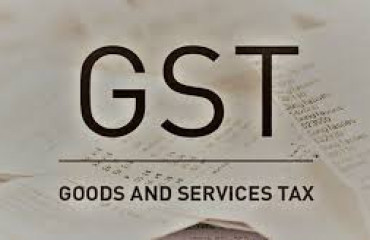
The index of industrial production (IIP) has in recent years been coming under increasing criticism for not being relevant for contemporary users. A recent op-ed in Mint (‘India’s IIP is losing its relevance as a lead indicator of economic growth’)(bit.ly/42D5YvE) is a good example. These criticisms are valid, and to better understand the disaffection, it is useful to review the manner in which the series is constructed.
The index of industrial production (IIP) has in recent years been coming under increasing criticism for not being relevant for contemporary users. A recent op-ed in Mint ('India's IIP is losing its relevance as a lead indicator of economic growth')(bit.ly/42D5YvE) is a good example. These criticisms are valid, and to better understand the disaffection, it is useful to review the manner in which the series is constructed.
The IIP is one of the oldest statistical products produced by the National Statistical Office, dating back to pre-independence. The index is collected through a large number of source agencies, many of which have their roots in the administrative machinery which evolved in the 1950s' 'command economy.' Many of these agencies have lost their relevance over the years. For some, supplying data for the IIP seems to be the only reason for their continued existence.
The article referred to above points out that IIP growth does not match India's real GDP growth. This is not just a problem with the current IIP series, but has in fact been a problem for at least the last three revisions of the IIP series. In each revision, there have been a few years of overlap. In overlapping periods, growth in the new series tends to be higher than that of the old series (the only exception is the two years after the 2008 financial crisis).
View Full Image
Another way to see the IIP's dampened growth performance is to compare it with the Annual Survey of Industries (ASI). The attached graph takes data from three IIP series' (base years 1993-94, 2004-05 and 2011-12) and compares them to the ASI. For this comparison, the graph takes the value of output from the ASI, deflates it to constant prices (using the wholesale price index), and expresses it as an index for the comparable IIP base years. In each one of these, we see that after a few years the divergence between IIP and ASI becomes quite marked.
An implication of this divergence is that estimates of value-added in the quasi corporate and household segments of the economy are under- estimated in the early estimates of GDP.
The reason we observe this behaviour in the IIP is the manner in which it is constructed for the manufacturing segment. For the base-year exercise, establishments are identified and arrangements are put in place to obtain monthly production data of specified items from these establishments. The establishments and specified items are chosen based on their importance in the base year manufacturing profile. In subsequent months and years, the same list of establishments supplies monthly production data. This method of data collection, which 'freezes' both items and establishments, has some inherent problems. Firstly, it does not capture new establishments coming up. Additionally, the closure of old establishments leads to non-responses. The IIP's January 2024 press release observes that the final revised estimates for August 2023 had a weighted response rate of 95%. Keeping in mind that non-responses are concentrated in the manufacturing segment, which has a weight of approximately 77% in the total IIP, the non-response is significant. In contrast, ASI data reveals that between 2011-12 and 2021-22, the number of factories increased by as much as 15% (and about 5% since 2017-18). Thus, we see that the IIP is losing out on newer factories and is unable to account for changes in the item mix.
The graph does, however, show that in years close to the base year, the IIP manages to track ASI reasonably well.
Part of the reason for this is that IIP revisions take place after a substantial gap. This is because of the time taken to release ASI data (though this has been reducing over the years) and the time it takes to establish a protocol for collecting monthly data through 14 different source agencies (with all the implied bureaucratic red tape this entails). Each of the revisions took at least 5-6 years. The long process of launching a new series implies that the problem of non-response kicks in only after the series is launched. Establishments that close during the period of revision are simply substituted in the exercise.
There is a felt need for an accurate high-frequency indicator of manufacturing output. In the absence of this, people rely on indicators like the Purchasing Managers Index (PMI) which is not quite an indicator of output. The GST system by contrast, is a rich source of high-frequency information about the economy and can be used to construct an indicator which would be far superior to the current IIP. Virtually all manufacturing establishments file monthly returns to obtain input tax credit, giving details of both output and value added by the HSN code. It is possible to put in place mechanisms to extract information to give indicators of growth in production and value added with far greater accuracy and timeliness compared to the IIP. Just as the department of commerce releases monthly merchandise trade data, it is possible to conduct this exercise without compromising commercial confidentiality.
